Joe Barlow’s Adjustments: A Potential Turning Point
A look back at Joe Barlow’s past struggles and the adjustments he’s made in hopes of regaining his past form
Opening
Earlier this week, the Rangers went out and signed Joe Barlow to a minor league deal with a non-roster big league spring invite. Barlow was last seen in the majors in 23’ with the Rangers and spent all of last year with the White Sox in the minors, where he wasn't very effective. Granted, this was a small sample size that included him being placed on the IL for a shoulder injury that sidelined him for over 3 months, which can account for the seemingly low usage and poor results when he did pitch.
What draws me toward writing this piece, though, is how Joe lost over a full tick on his 4-seam, slider, and curve from 22’ to 23’ without any significant injury to explain why. I believe it's due to a delivery tweak that caused this decreased velocity and overall worse effectiveness. The encouraging aspect of this is that Barlow has seemed to regain this velocity in a recorded pen with other arsenal implementations as well. When Joe had this increased velocity, he showed great promise, posting a 2.15 ERA, 22.6 K%, and a 3.79 FIP in his first two seasons, leading me to believe there's still gas left in the tank for Barlow. Throughout this article, I'm going to point out some of his mishaps from the age of 23 and how he has adjusted to the age of 25.
Delivery Characteristics 22’-23’
Looking at Joe's delivery characteristics from 22’-23’, we see that he made a minor change to his delivery that had major implications on his velocity. Starting off between their deliveries, we see some similarities with Barlow having anterior pelvic tilt prior at starting posture with a similar height of his peak lead leg lift. As Barlow progresses down the mound, he still produces efficient depth, but once he gets to landing, I begin to see differences. (Top Velos from 22’ - 23’ Below)
In 22’, we see at the initial foot strike Barlow has great scap retraction to go along with his delayed torso rotation. When we look at 23’, though, we see how, at the initial foot strike, Barlow is much farther into his delivery than before. From the looks of it, it seems like Barlow has quickened up his rotational abilities altogether, with his hips being farther into delivery than the previous years. This isn't necessarily a problem, but the effects it has on his torso rotation are. As you can see in 22’, his torso is already opening up prior to landing, which causes him to pull off, leading to less energy exuded into delivery. This, as a result, led to the decreased velocities I mentioned earlier.
From there, though, we see similar throwing characteristics with Barlow inducing a considerable amount of trunk tilt (slightly more in 22’) to achieve his 51-degree arm angle, which pairs with his 6.3’ extension to produce a 5.7’ release height. At ball release, Barlow strikes me as a player who leans more towards pronation and bicep bias due to his wrist orientation at delivery and his unaligned arm. This ability allows him to have a very high spin efficiency on his 4-seam while also having the ability to produce velocity on his breaking pitches.
Present Day Delivery
Now, looking at Barlow's present-day delivery from a video posted by Driveline Baseball (Video Link), we see some adjustments in action. He begins with the same postural alignment as well as peak leg lift and depth creation within delivery, but once he gets a foot strike, we see a major change. From the looks of it, Barlow is able to effectively delay torso rotation like he had in 22’, allowing him to build up energy to then be used in delivery rather than leaking like he had in 23’.
These slight adjustments had major implications on his velocity allowing him to reach up to 96.1 MPH on his 4-Seam, which is over a full tick higher than anything he threw in 23’! The velocity improvements didn't stop there Barlow was also able to reach 88.4 MPH on his slider and 80.5 MPH on his curve, which like his 4-Seam would've been some of the fastest pitches he's thrown since 22’.
Sinker Changes
To add to the regaining of velocity, Barlow also flashed his reoriented sinker that produced a shape around 12 iVB and 11 iHB. The last time Barlow threw this pitch was back in 22’, and it was more generally a runner producing a shape of around 18iVB and 12.1 iHB. To produce this shape, I would infer that he is inducing SSW effects to allow for this depth unless he, of course, is taking a compensatory pattern to achieve this shape. This pitch allows Barlow to have an expanded arsenal that can be a useful tool against same-handedness.
Spring Results Thus Far
With spring training in action, Barlow is trying to earn a spot. He's made one appearance thus far at the time of writing this piece and was productive, pitching a frame allowing no runs and one walk. What's encouraging is that the increased velocity that I was inferring to earlier is showing up in a big way for Barlow. His 4-seam clocked in at 95.5, cutter/slider at 86.8, and his curveball back up to 80.0 MPH! Of course, this is an extremely small sample, but it's encouraging to see Barlow regain some of his past form.
Conclusion
All in all, I love the turnaround Barlow has made in his career. After two great seasons to start off his career, Barlow seemed to lose his spark, which led to him producing much worse results. He went to Chicago, got injured, and had to rebuild to where he is now. He's currently signed to the Rangers on a minor league deal with an NRI, and I would love to see how he fares. He’ll have to fight an uphill battle to make the roster with notable names like Robert Garcia, Chris Martin, Hoby Miller, Luke Jackson, and Sean Armstrong, all of whom are notable additions to the Rangers bullpen this offseason. In addition, his velocity ticked up, and two options will likely get him used by the Rangers. These options allow the Rangers to have great roster adjustability, with Barlow being able to be optioned multiple times, which teams are typically in dire need of. Joe is the perfect storm for the Rangers and a name to watch out for this spring.






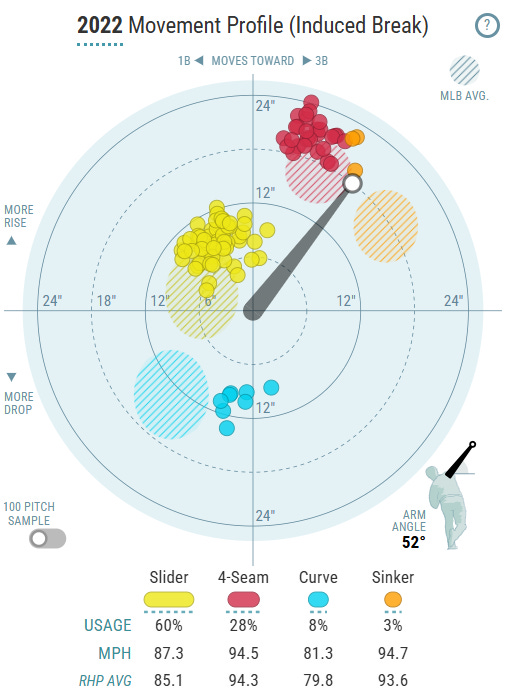

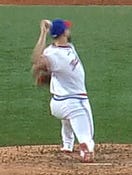
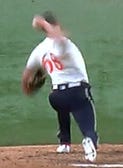
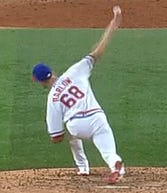
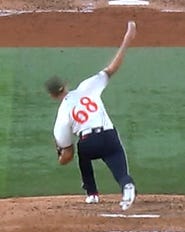
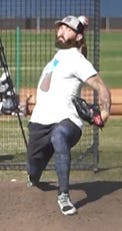

well done sam
Amazing analysis and a great read!